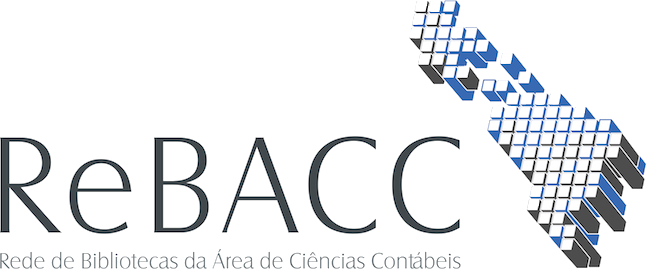Use este identificador para citar ou linkar para este item:
http://rebacc.crcrj.org.br/handle/123456789/4393| Título: | PERFIL DOS CONTROLES INTERNOS EM PREFEITURAS DO RIO GRANDE DO SUL: UMA ANÁLISE NAS MAIORES CIDADES GAÚCHAS Profile of internal controls in town Rio Grande do Sul: an analysis of major cities in Rio Grande do Sul |
| Editora / Evento / Instituição: | REVISTA DE CONTABILIDADE DO MESTRADO EM CIÊNCIAS CONTÁBEIS DA UERJ |
| Descrição: | Este estudo tem por objetivo identificar o perfil dos controles internos de prefeituras, localizadas nas maiores cidades do estado do Rio Grande do Sul – RS. A importância do estudo reside no exame da organização dos Controles Internos – CIs, assim como sua subordinação hierárquica dentro das diferentes estruturas organizacionais, com foco em organizações públicas (prefeituras). A pesquisa caracteriza-secomo um levantamento (survey), de caráter descritivo e abordagem qualitativa e quantitativa. Para a coleta dos dados foi aplicado um questionário, com perguntas abertas e fechadas, dirigidas às controladorias ou controles internos, das 18 maiores cidades do RS. Os resultados apontaram que 14 cidades possuem CIs constituídos e que a formação de seus controllers, é em grande parte, de profissionais de nível superior, destacando-se dentre esses, os contadores (42%). Quanto à estrutura hierárquica, observou-se que essesCIs estão em sua maioria, subordinados ao comando dos seus prefeitos e quanto ao grau de centralização de suas atividades de controle, 71% desses CIs, assim se auto-enquadram. Alguns CIs constam como staff (assessoria), e outros atuam como linha e staff, e suas ações principais são de avaliação e controle das metas orçamentárias e financeiras (Plano Plurianual, Lei de Diretrizes Orçamentárias e Orçamento Anual), observadas as determinações da Lei de Responsabilidade Fiscal – LRF.Palavras-chave: Controladoria, Controle interno, Prefeituras, Controllers.ABSTRACTThe aim of this study is to identify the profile of controlling in the Administration of large cities in the State of Rio Grande do Sul, southern Brazil. The importance of the study lies in the organization of Internal Controls (ICs), as well as in the hierarchical subordination within the several organizationalstructures, with special focus on public organizations (City Administration). The research is characterized as a descriptive study of survey with a quali-quantitative approach. For data collection, a questionnaire was applied with both closed and open questions directed to the controlling and internal controls of the eighteen large cities surveyed. The results show that the fourteen large cities have their bodies of IC duly established and that the background of their controllers is mostly of graduate professionals, highlighting, among them, the accountants (71%). As regards the hierarchical structure, it was observed that the ICs are, most of them, subordinated to the authority of their mayors. Concerning the degree of centralization of their controlling activities, ten out of these ICs fall into this category. Some ICs fall into the category of “staff”, followed by those that are active as line and staff,and their performances are the main evaluation and control targets as foreseen in the “Pluriannual Plan”,“Budgetary Guidelines Act” and “Yearly Budget”.Keywords: Controlling, Internal control, Administration, Controllers. The aim of this study is to identify the profile of controlling in the Administration of large cities in the State of Rio Grande do Sul, southern Brazil. The importance of the study lies in the organization of Internal Controls (ICs), as well as in the hierarchical subordination within the several organizational structures, with special focus on public organizations (City Administration). The research is characterized as a descriptive study of survey with a quali-quantitative approach. For data collection, a questionnaire was applied with both closed and open questions directed to the controlling and internal controls of the eighteen large cities surveyed. The results show that the fourteen large cities have their bodies of IC duly established and that the background of their controllers is mostly of graduate professionals, highlighting, among them, the accountants (71%). As regards the hierarchical structure, it was observed that the ICs are, most of them, subordinated to the authority of their mayors. Concerning the degree of centralization of their controlling activities, ten out of these ICs fall into this category. Some ICs fall into the category of “staff”, followed by those that are active as line and staff, and their performances are the main evaluation and control targets as foreseen in the “Pluriannual Plan”,“Budgetary Guidelines Act” and “Yearly Budget”. Keywords: Controlling, Internal control, Administration, Controllers. |
| URI: | http://rebacc.crcrj.org.br/handle/123456789/4393 |
| Outros identificadores: | http://www.atena.org.br/revista/ojs-2.2.3-06/index.php/UERJ/article/view/1292 |
| Aparece nas coleções: | Revista de Contabilidade do Mestrado em Ciências Contábeis da UERJ |
Arquivos associados a este item:
Não existem arquivos associados a este item.
Os itens no repositório estão protegidos por copyright, com todos os direitos reservados, salvo quando é indicado o contrário.

